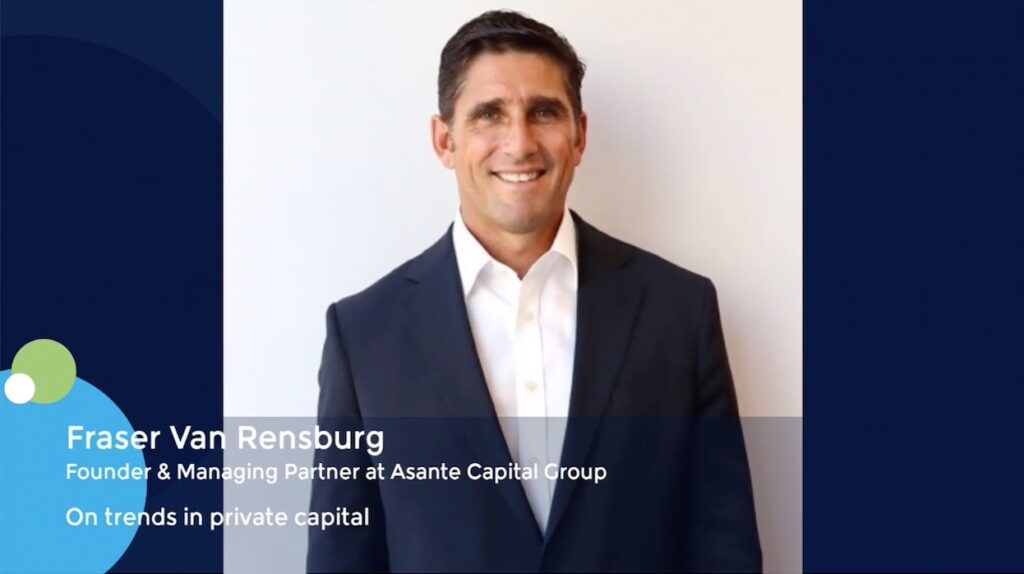Thomas Kyriakoudis, Partner at LGT Capital Partners, on trends of evergreen funds
Thomas Kyriakoudis, Partner at LGT Capital Partners, shared his insights on the evolution of the industry, the significance of Evergreen funds, and the future of private credit. The discussion covered a range of topics, from market cycles to investor experience, providing a comprehensive look at the current state and future prospects of private credit.
Key Topics Discussed
- Background and Role at LGT Capital Partners
- Thomas’s Extensive Experience: With two decades in private credit, Thomas has witnessed the market’s transformation from a niche sector to a major industry worth $1.7-$1.8 trillion. His journey reflects the dynamic nature of private credit and its growing importance in global finance.
- Role at LGT: As Co-Head of Credit Solutions, Thomas oversees a diverse range of private credit assets, including direct lending, specialty finance, distressed assets, and CLOs. His leadership is pivotal in navigating the complexities of both European and North American markets.
- Evolution of the Private Credit Market
- Growth Post-2008 Crisis: The 2008 financial crisis marked a turning point, especially in Europe, where banks became less willing to lend to privately owned businesses. This shift catalyzed the growth of the private credit industry, providing alternative financing solutions for companies and sponsors.
- Market Complexity: The private credit market has evolved into a sophisticated and complex industry, offering a wide array of investment opportunities and strategies.
- Fundraising Cycles in Private Credit
- Challenges in Fundraising: Raising funds in private credit has always been challenging, particularly for new businesses. Thomas highlighted the difficulties faced in the early 2010s and the relatively easier period from 2018-2021.
- Current Dynamics: The last few years have seen a reversal, with fundraising becoming tougher, especially for closed-ended funds. This shift reflects changing investor sentiments and market conditions.
- Evergreen Funds
- Advantages of Evergreen Funds: Thomas emphasized three key benefits of Evergreen funds:
- Diversification: Evergreen funds allow for extensive diversification across asset classes, geographies, and strategies, reducing risk and enhancing stability.
- Rapid Asset Investment: These funds can quickly deploy capital into a diverse pool of assets, ensuring efficient use of investor funds.
- Liquidity: Evergreen funds offer better liquidity options compared to closed-ended funds, allowing investors to exit more rapidly and flexibly.
- Multi-Strategy Approach: LGT’s preference for a multi-strategy approach enables them to pivot between asset classes and capitalize on evolving market opportunities.
- Advantages of Evergreen Funds: Thomas emphasized three key benefits of Evergreen funds:
- Investor Experience and Expectations
- Delivering Consistent Performance: Thomas stressed the importance of reliable and consistent performance, not just in terms of returns but also operational excellence and transparency.
- Enhancing Investor Experience: A positive investor experience is crucial for retaining and attracting investors. This includes clear communication, smooth cash flows, and a transparent investment process.
- Market Trends and Future Outlook
- Potential for Increased Defaults: While Thomas does not foresee a significant rise in distress similar to the 2010 environment, he anticipates moderate levels of soft defaults and renegotiations of capital structures.
- Role of Partnerships: The industry is witnessing increased consolidation and partnerships between traditional asset managers and private credit providers, blending skills to navigate the changing market landscape.
- Continuous Innovation: To stay relevant, firms must continually seek new sources of alpha and adapt to new market opportunities, ensuring steady and non-correlated returns.
Key timestamps:
00:07 Introduction to the Fireside Chat
01:52 Evolution of the Private Credit Market
03:30 Fundraising Challenges in Private Credit
04:46 Impact of Interest Rates on Fund Performance
06:22 Transitioning to Evergreen Funds
08:22 Changing Skill Sets in Asset Management
10:01 Multi-Strategy vs. Single-Strategy Approaches
13:44 Partnership Dynamics in Private Credit
15:12 Building Brand Value in Asset Management
16:38 Defining Operational Excellence
17:52 The Importance of Investor Experience
18:44 Investor Sophistication and Knowledge
20:01 Skills Required in the Investment Industry
21:15 Future Outlook for Investment Strategies
22:22 Market Predictions and Exit Strategies
24:13 Default Rates and Market Stability
25:39 Conclusion and Final Thoughts












